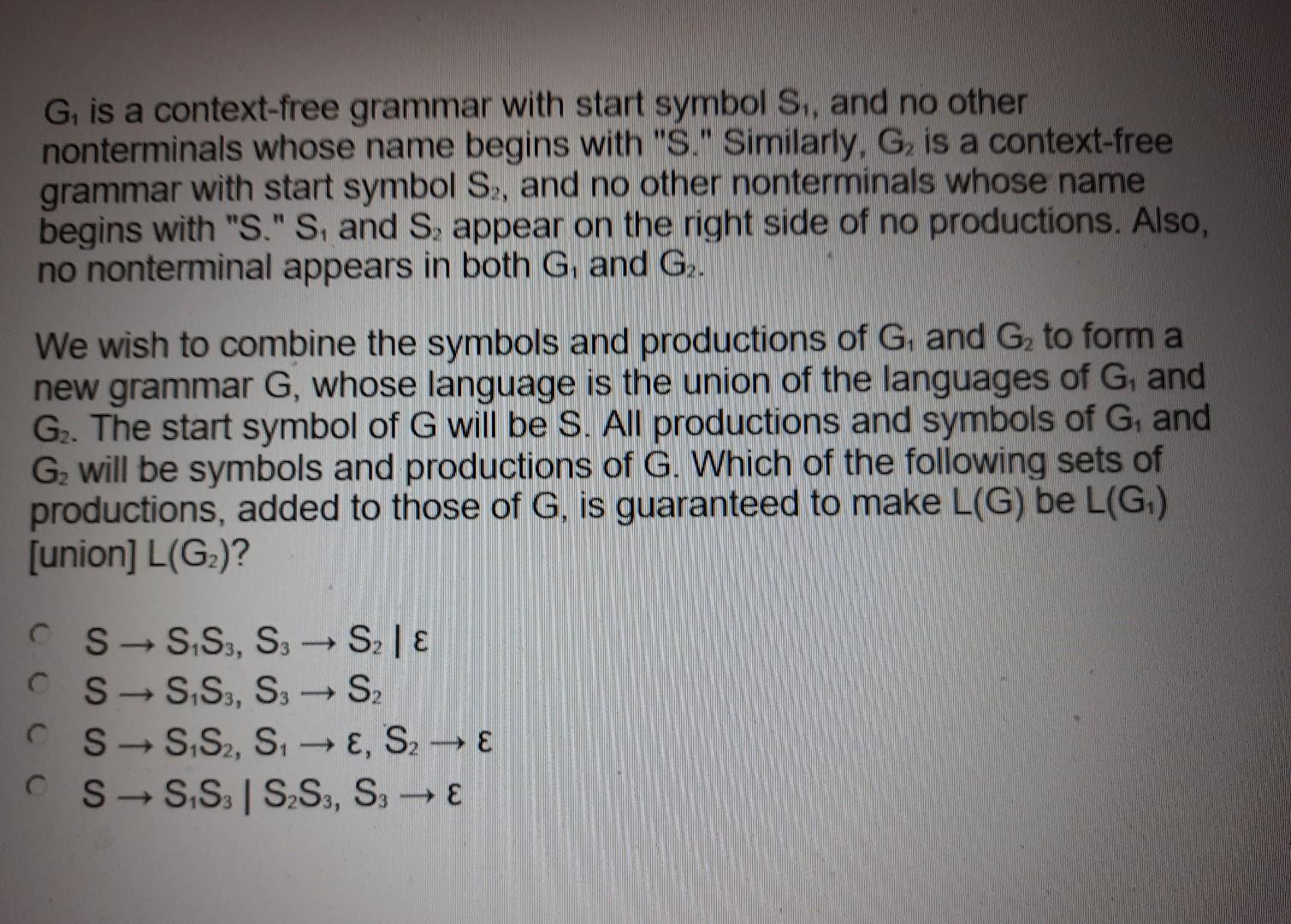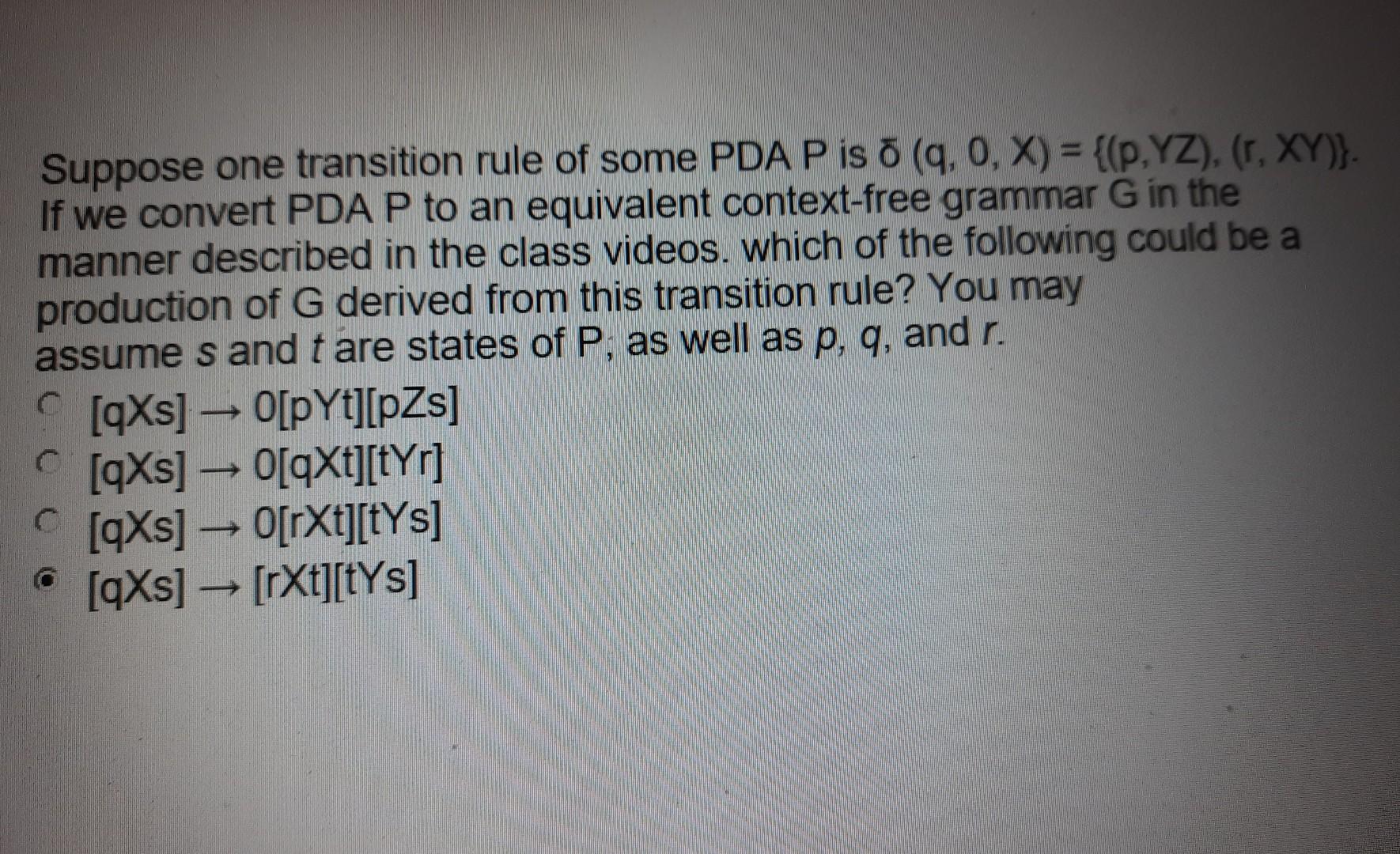Answered step by step
Verified Expert Solution
Question
1 Approved Answer
G is a context-free grammar with start symbol S, and no other nonterminals whose name begins with S. Similarly, G, is a context-free grammar with


G is a context-free grammar with start symbol S, and no other nonterminals whose name begins with "S." Similarly, G, is a context-free grammar with start symbol Sy, and no other nonterminals whose name begins with "S." S, and S, appear on the right side of no productions. Also, no nonterminal appears in both G. and G We wish to combine the symbols and productions of G and G, to form a new grammar G, whose language is the union of the languages of G, and G. The start symbol of G will be S. All productions and symbols of G, and G, will be symbols and productions of G. Which of the following sets of productions, added to those of G, is guaranteed to make L(G) be L(G) [union] L(G2)? CS SS3, S3 S2 | 8 SS.S, SS CSS,S, S, E, SE SSS SS, S. E Suppose one transition rule of some PDA P is 7 (q, o, X) = {(p.YZ), (r, XY)}- If we convert PDA P to an equivalent context-free grammar G in the manner described in the class videos, which of the following could be a production of G derived from this transition rule? You may assume s and t are states of P, as well as p, q, and r. [qXs] O[pYt][pZs] [qXs] - [qXt][tYr] [qXs] - [rXt][tYs] [qXs] [rXt][tYs] G is a context-free grammar with start symbol S, and no other nonterminals whose name begins with "S." Similarly, G, is a context-free grammar with start symbol Sy, and no other nonterminals whose name begins with "S." S, and S, appear on the right side of no productions. Also, no nonterminal appears in both G. and G We wish to combine the symbols and productions of G and G, to form a new grammar G, whose language is the union of the languages of G, and G. The start symbol of G will be S. All productions and symbols of G, and G, will be symbols and productions of G. Which of the following sets of productions, added to those of G, is guaranteed to make L(G) be L(G) [union] L(G2)? CS SS3, S3 S2 | 8 SS.S, SS CSS,S, S, E, SE SSS SS, S. E Suppose one transition rule of some PDA P is 7 (q, o, X) = {(p.YZ), (r, XY)}- If we convert PDA P to an equivalent context-free grammar G in the manner described in the class videos, which of the following could be a production of G derived from this transition rule? You may assume s and t are states of P, as well as p, q, and r. [qXs] O[pYt][pZs] [qXs] - [qXt][tYr] [qXs] - [rXt][tYs] [qXs] [rXt][tYs]
Step by Step Solution
There are 3 Steps involved in it
Step: 1

Get Instant Access to Expert-Tailored Solutions
See step-by-step solutions with expert insights and AI powered tools for academic success
Step: 2

Step: 3

Ace Your Homework with AI
Get the answers you need in no time with our AI-driven, step-by-step assistance
Get Started


